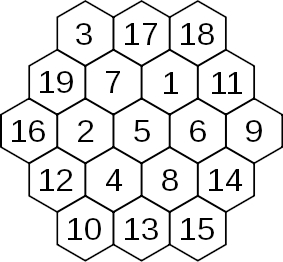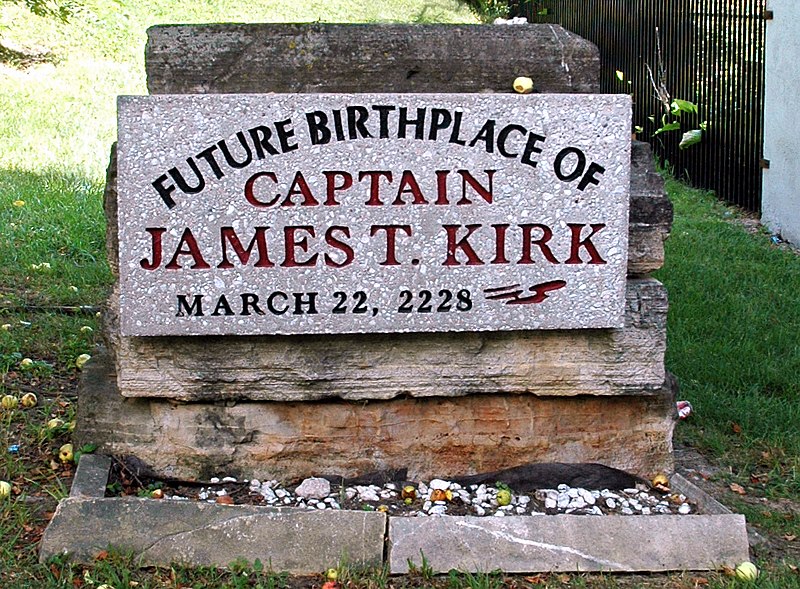If you arrange the first 12 primes into exponentiated summands, you get a prime number:
23 + 57 + 1113 + 1719 + 2329 + 3137 = 15148954872646850196557152427604893685308877022260348791 is prime.
(From Fermat’s Library.)
If you arrange the first 12 primes into exponentiated summands, you get a prime number:
23 + 57 + 1113 + 1719 + 2329 + 3137 = 15148954872646850196557152427604893685308877022260348791 is prime.
(From Fermat’s Library.)
The “Loop” golf course at Michigan’s Forest Dunes Golf Club is reversible: Each of the 18 greens can be approached from either of two directions, so players can play the course clockwise on one day and counterclockwise the next.
“There are no defined tee boxes, of the kind that modern golfers are accustomed to, because what serves as a tee area one day may be fairway when playing the opposite direction the next day.”
“Our biggest fear is that people like one course a lot more than the other course,” designer Tom Doak told Golf Advisor. “I’m very happy with what we’ve done. There are a few of the best holes on both courses. I think people will enjoy both of them, and that was a hard thing to do.”

French street artist Braga Last One used spray paint to transform a gas tank outside Marseilles into a Sphynx cat.
The piece must be viewed from a certain perspective, but it blends into the landscape to make the illusion more compelling.
See more of the artist’s work at My Modern Met.

French conceptual artist Julien Berthier designed this yacht, known as the Love Love — it’s fully seaworthy but appears perpetually to be sinking.
He says it represents “lost hope and death.”
(Via the American Sailing Association.)

There’s only one normal magic hexagon — only one hexagonal arrangement of cells like the one shown here that can be filled with the consecutive integers 1 to n such that every row, in all three directions, sums to the same total. (This excludes the trivial example of a single cell on its own, as well as rotations and reflections of the hexagon shown here.)
Amazingly, it appears that this lonely example may not have been discovered until 1888! In a 1988 letter to the Mathematical Gazette, Martin Gardner reported that the magic hexagon was given as a problem in the German magazine Zeitschrift für mathematischen und naturwissenschaftlichen Unterricht (Volume 19, page 429) in 1888. The proposer was identified only as von Haselberg, of Stralsund; his solution was published in the next volume.
Gardner writes, “The structure could easily have been discovered by mathematicians in ancient times, but as of now, this is the earliest known publication.”
(Martin Gardner, “The History of the Magic Hexagon,” Mathematical Gazette 72:460 [June 1988], 133.)

Riverside, Iowa, claims Star Trek‘s James T. Kirk as a future native. In a 1968 book, series creator Gene Roddenberry had written that Kirk was born in Iowa; in 1985 city council member Steve Miller proposed that this will happen in Riverside, and the motion passed unanimously.
Two Star Trek novels have taken up the conceit, though it’s not considered canon. I guess we’ll see what happens — he’s due to arrive (somewhere!) on March 22, 2228.
In Ulysses, Leopold Bloom’s locked private drawer at 7 Eccles Street contains, among other things:
3 typewritten letters, addressee, Henry Flower, c/o P.O. Westland Row, addresser, Martha Clifford, c/o P.O. Dolphin’s Barn: the transliterated name and address of the addresser of the 3 letters in reversed alphabetic boustrophedontic punctated quadrilinear cryptogram (vowels suppressed) N. IGS./WI. UU. OX/W. OKS. MH/Y. IM …
This actually works: Quadrilinear means that the cipher is to be set in four lines; reversed alphabetic means that the key is a = z, b = y, etc.; and boustrophedontic is a term from paleography meaning that the writing runs right and left in alternate lines. So the cryptogram and its solution look like this:
N . I G S . m a r t h a W I . U U . O X d r o f f i l c W . O K S . M H d o l p h i n s Y . I M b a r n
Apparently Joyce or Bloom forgot that the last line should run right to left.
(From David Kahn, The Codebreakers, 1967.)

The Airavatesvara Temple of Tamil Nadu bears a remarkable ambiguous carving — the head can be perceived as belonging either to the bull or to the elephant.